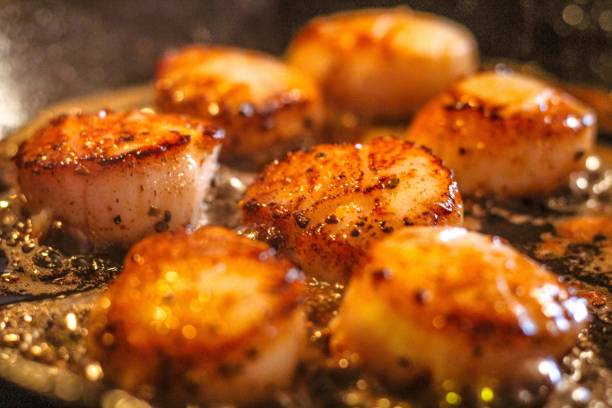Seared Perfection: The Art of Reverse Searing Steaks
Elevate your steak game with the reverse searing technique, a culinary innovation that's taking the food world by storm. This method flips traditional steak cooking on its head, resulting in perfectly cooked, juicy meat with a crisp, flavorful crust. Join us as we explore the science, steps, and secrets behind this game-changing approach to preparing the ultimate steak.

Choosing the Right Cut
Not all steaks are created equal when it comes to reverse searing. Thick cuts of meat, typically 1.5 inches or thicker, work best for this technique. Prime candidates include ribeye, New York strip, filet mignon, and porterhouse steaks. These cuts have enough mass to withstand the extended cooking time without drying out. The marbling in these steaks also contributes to a more flavorful and juicy end result. When selecting your steak, opt for high-quality, well-marbled cuts from reputable sources. Remember, the quality of your ingredients plays a crucial role in the final taste and texture of your reverse-seared masterpiece.
The Low and Slow Phase
The first step in reverse searing is the low-temperature cooking phase. Preheat your oven to 225°F (107°C) and place your seasoned steak on a wire rack set over a baking sheet. This setup allows air to circulate around the entire steak, ensuring even cooking. Insert a meat thermometer into the thickest part of the steak to monitor its internal temperature. Cook the steak until it reaches about 10-15°F below your desired final temperature. This process can take anywhere from 45 minutes to an hour, depending on the thickness of your steak. The slow cooking allows the meat to heat evenly, resulting in a more consistent doneness throughout.
The Perfect Sear
Once your steak reaches the target temperature, it’s time for the crucial searing step. Remove the steak from the oven and let it rest for a few minutes while you prepare for searing. Heat a cast-iron skillet or heavy-bottomed pan over high heat until it’s smoking hot. Add a high smoke point oil like grapeseed or avocado oil to the pan. Sear the steak for 45 seconds to a minute on each side, including the edges. This brief, intense heat creates a beautiful crust through the Maillard reaction, adding depth of flavor and texture to your steak. For an extra flavor boost, add butter, garlic, and herbs to the pan during the last minute of searing.
Resting and Serving
After searing, let your steak rest for 5-10 minutes to allow the juices to redistribute throughout the meat. This crucial step ensures that your steak remains juicy when cut. While resting, you can prepare any accompanying sauces or side dishes. When ready to serve, slice the steak against the grain for maximum tenderness. The result should be a perfectly cooked steak with a consistent pink interior and a beautifully caramelized exterior. Pair your reverse-seared steak with bold red wines or craft beers to complement its rich flavors and elevate your dining experience.
Pro Tips for Reverse Searing Success
• Use a reliable meat thermometer for precise temperature control
• Pat the steak dry before seasoning to promote better crust formation
• Experiment with different seasoning blends to find your favorite flavor profile
• Allow the steak to come to room temperature before cooking for more even results
• Consider using a sous vide machine for even more precise temperature control during the low-temperature phase
• Try reverse searing on a grill for added smoky flavor
• Don’t forget to rest the steak after searing to maximize juiciness
In conclusion, reverse searing is a game-changing technique that allows home cooks to achieve restaurant-quality steaks with remarkable consistency. By understanding the science behind this method and following these steps, you can elevate your steak game and impress your guests with perfectly cooked, flavorful cuts of meat. So fire up your oven, grab your favorite cut, and embark on a culinary adventure that will revolutionize your approach to steak preparation.






